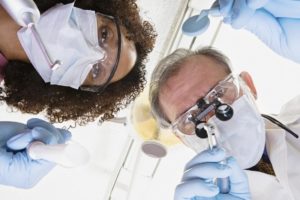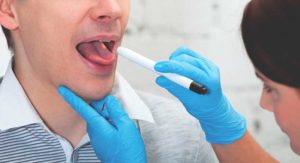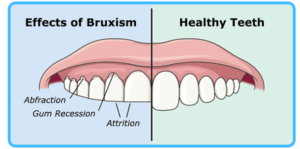Leukoplakia is as complex and rare like its name. If you’re slightly doubtful of this condition, you can call this as a relative to some common mouth problems, like bad breath, canker or cold sores and oral thrush. Although you can differentiate this one by identifying if you carry white and gray patches. If you have these patches inside your cheeks, on your tongue or on the floor of your mouth, leukoplakia is now at its peak!
Dental professionals prefer to call leukoplakia as a disorder of the human mouth’s mucous membrane. Number one factor of its outbreak is irritation. Mouth irritation usually takes place if you have rough teeth, ill-fitting and rough areas of dentures, fillings and dental crowns. All these factors contribute more to leukoplakia if it rubs against your gums and cheeks. There are also speculations that leukoplakia is a result of excessive smoking. This explains why majority of heavy smokers have white and gray patches.
Whatever that causes your irritation, seeking a helping hand from an emergency dentist in Mesa AZ can help your case.
 Leukoplakia is easy to diagnose. You can easily notice this through the mere existence of oral lesions or white and gray patches. While this condition mostly attacks adults, this remains huge possibility to kids and teens. Although you find this painless, leukoplakia and its patches are quick to detect changes. These are difficult to touch and are particular to certain foods and heat. There are lesions that are not hard to predict. However, there are also those that love to sneak and remain hidden. Your dentist can spot that. Dentists can assess if you have hidden patches through going through a thorough check in your teeth, mouth and tongue. In case you are positive with leukoplakia, your dentist may suggest a biopsy. This is where leukoplakia becomes lethal. The oral lesions can contribute to oral cancer. This is why majority of dentists conduct a biopsy. Biopsy necessitates your dentist to get a piece of tissue from the lesion. This will undergo an in-depth testing inside a lab prior to any leukoplakia treatments.
Leukoplakia is easy to diagnose. You can easily notice this through the mere existence of oral lesions or white and gray patches. While this condition mostly attacks adults, this remains huge possibility to kids and teens. Although you find this painless, leukoplakia and its patches are quick to detect changes. These are difficult to touch and are particular to certain foods and heat. There are lesions that are not hard to predict. However, there are also those that love to sneak and remain hidden. Your dentist can spot that. Dentists can assess if you have hidden patches through going through a thorough check in your teeth, mouth and tongue. In case you are positive with leukoplakia, your dentist may suggest a biopsy. This is where leukoplakia becomes lethal. The oral lesions can contribute to oral cancer. This is why majority of dentists conduct a biopsy. Biopsy necessitates your dentist to get a piece of tissue from the lesion. This will undergo an in-depth testing inside a lab prior to any leukoplakia treatments.
The therapies needed for it depend on your case and its cause. If the cause of oral lesion is due to rough surface of fillings and dental crowns, your dentist may conduct drills and other procedures necessary to achieve a smooth surface. In case the treatment doesn’t go well, you may need an oral surgery. Extreme cases require complex procedures and therapies most especially if your case belongs to hairy leukoplakia. Hairy leukoplakia is a strong indicator of HIV infection. The most efficient therapy for this is an antiviral medication.
It can escalate if left untreated. Whether the cause is having rough teeth or rough surfaces of fillings, it pays to seek professional help ahead of time. The condition doesn’t just affect your oral health. As expressed above, it can be lethal especially if it doesn’t get the appropriate treatments.
When you talk to a dentist, you will learn lots of things, including human oral health and the possibility of having leukoplakia when you exercise no dental hygiene.

